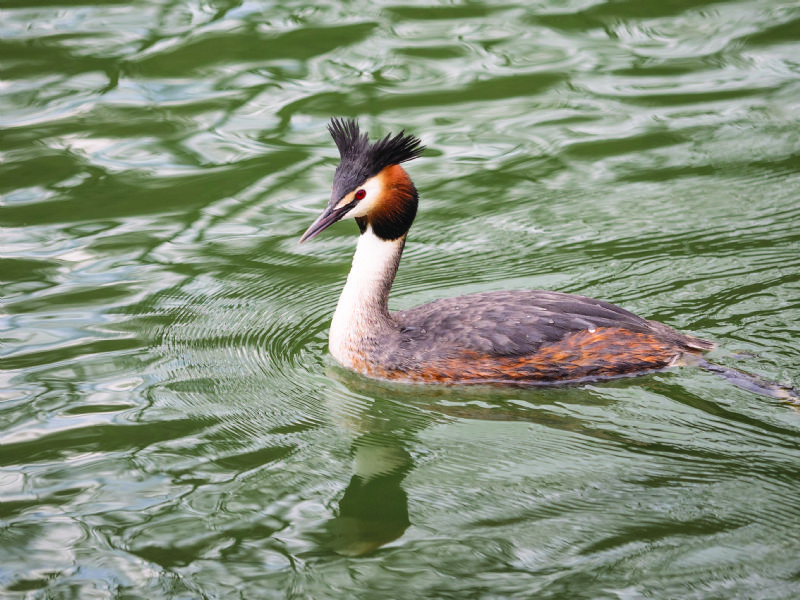- Home
- News, Articles & Reviews
We are hiring! Please click here to join our growing magazine delivery team in Gloucestershire!
Areas
Pets & Wildlife
Archive

Great crested grebes
All Areas > Pets & Wildlife > Wildlife Matters
Author: Jenny Stevens, Posted: Tuesday, 24th January 2017, 08:00
Great crested grebes are present in the UK throughout the year; each season gracing our lakes and reservoirs. They were nearly hunted to extinction in the UK in the 19th century, their elegant feathers desirable for adorning hats, but they’re thankfully now a regular sight on our waterbodies, and always a pleasure to spot. They are the largest grebe in Europe and are easily identifiable in the breeding season, when they show off an impressive black plume on the head and orangey ruff with black tips around the white-fronted neck and chest.
They are at their most spectacular in February
Watching them for any period of time, you’ll see them dive below the surface, in search of small fish and aquatic invertebrates to feed on – often popping up in a different place entirely to where they disappeared.
February, going into spring, is when they’re at their most spectacular. Spend some time at your local wetland reserve and you may just be treated to their courtship displays. During the early stages of courtship and on being reunited after a time apart, one bird will approach the other underwater. Appearing suddenly, they’ll begin dipping and shaking their head, mirroring each other’s actions. A game of ‘hide and seek’ ensues; the birds diving and chasing each other for a period.
The elaborate ‘weed ceremony’ strengthens their pair bond
Even more delightful is the ‘weed ceremony’ – grebes will approach each other carrying weeds in their beaks, in anticipation of building a nest. On reaching each other they rise up, as though standing on water, chests touching and heads shaking once more. They tread water and hold this upright position for a time. These elaborate actions are said to strengthen their pair bond.
Late in the spring, around two-four eggs will be laid in a nest made up of vegetation and weeds, carefully constructed on a floating platform.
The male and female share parenting duties – each sit on the eggs for periods of time and will cover the eggs with vegetation if they must be left alone, such as in the case of a predator threat. The hatchlings will emerge after about four weeks.
Newly-hatched stripy-headed chicks travel on their parents’ backs
More delights are yet to come for watchers of this fascinating bird, as newly-hatched stripy-headed chicks will be carried around on either parents’ back for a time – a way of getting the vulnerable hatchlings away from the nest as quickly as possible. They are then encouraged to swim independently quickly; the adult diving and leaving the chick on the surface of the water; re-emerging a short distance away and encouraging the youngster to swim towards them.Copyright © 2025 The Local Answer Limited.
Unauthorized use and/or duplication of this material without express and written permission from this site's author and/or owner is strictly prohibited. Excerpts and links may be used, provided that full and clear credit is given to The Local Answer Limited and thelocalanswer.co.uk with appropriate and specific direction to the original content.More articles you may be interested in...


© 2025 The Local Answer Limited - Registered in England and Wales - Company No. 06929408
Unit H, Churchill Industrial Estate, Churchill Road, Leckhampton, Cheltenham, GL53 7EG - VAT Registration No. 975613000You are leaving the TLA website...
You are now leaving the TLA website and are going to a website that is not operated by us. The Local Answer are not responsible for the content or availability of linked sites, and cannot accept liability if the linked site has been compromised and contains unsuitable images or other content. If you wish to proceed, please click the "Continue" button below:




